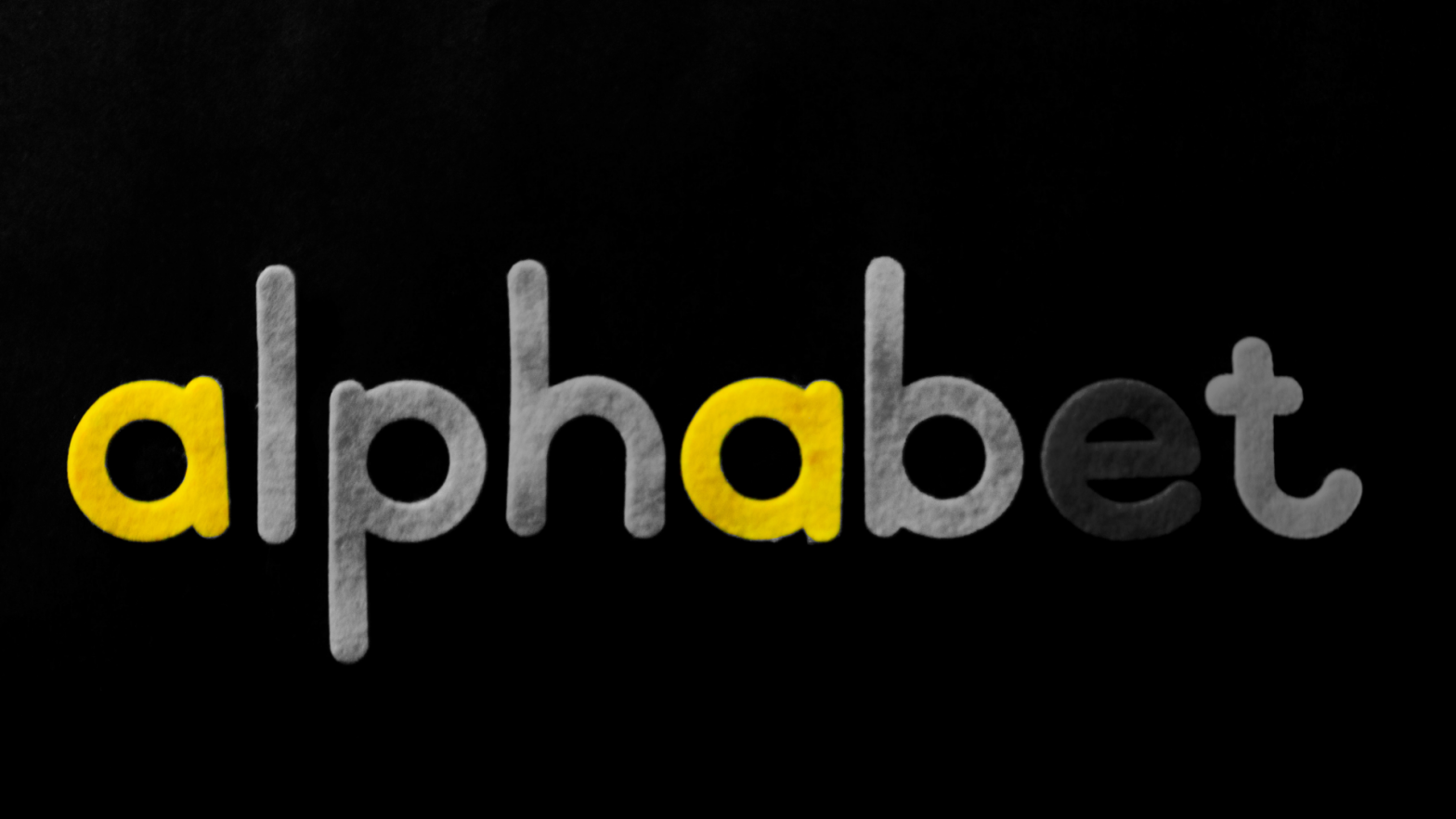Two years ago, I went on a much-anticipated city break to Berlin full of optimism, feeling that this was the moment when I could finally show off my German language skills. I had been studying the language for a couple of years and promised myself that I would only speak German during the trip. I was doing quite well. However, I did not think that it was the German alphabet that would cause the biggest problems.
Upon arriving at the hotel, I greeted the receptionist with a smile on my face, and after a pleasant exchange of words, I was asked the following question:
“Könnten Sie das buchstabieren?” (Could you spell it?).
Seemingly simple, but is it really? Suddenly I was doused in sweat and struggled to squeak out a few sounds, which ended in a mutual misunderstanding and an apologetic look. I felt disappointed that such a simple question had caused me a problem.
I knew that if I had only applied myself more to learning the basics a few years ago, I would have avoided this scenario. That’s why I’m writing this article now, to show you that if you’re learning the language, the German alphabet is something you should definitely take the time to learn, even if you’re not planning to go abroad at the moment.
Familiarizing yourself with the alphabet will provide a solid foundation for further German language learning. It will help you avoid pronunciation problems and many misunderstandings. All you need to do is learn a few rules and you will immediately feel more confident speaking the language.
- Das deutsche Alphabet – The German alphabet
- Letters in the German alphabet: how to pronounce them
- Long and short vowels in German
- Umlauts: ä, ö, ü
- Diphthongs
- ß – scharfes S or Eszett
- The German alphabet: how to spell German words to avoid misunderstandings
- Learning German with a language course from Taalhammer
Das deutsche Alphabet – The German alphabet
The German alphabet consists of 30 letters, 26 of which are the Latin alphabet letters we are familiar with. In addition, there are three letters with an umlaut: ä, ü, ö, and the letter ß – this is the so-called scharfes S or Eszett (read “escet”) specific to the German language.
Letters in the German alphabet: how to pronounce them
Here is a list of letters with notation according to the international phonetic alphabet (IPA).
The notation [:] means that the vowel is long and therefore it should be pronounced as a looooong sound.
- A-a [aː],
- Ä- ä [ε] or A-Umlaut,
- B- b [beː],
- C- c [tse],
- D- d [deː],
- E- e [eː],
- F- f [ɛf],
- G- g [ɡeː],
- H- h [haː],
- I- i [iː],
- J- j [jɔt],
- K- k [kaː],
- L- l [ɛl],
- M- m [ɛm],
- N- n [ɛn],
- O- o [oː],
- Ö- ö [ø] or O-Umlaut,
- P- p [peː],
- Q- q [kuː],
- R- r [ɛr],
- S- s [ɛs],
- T- t [teː],
- U- u [uː],
- Ü- ü [y] or U-Umlaut,
- V- v [faʊ̯],
- W- w [ve],
- X- x [ɪks],
- Y- z [ˈʏpsilɔn],
- Z- y [tsɛt],
- ß [escet]
As you can see, although the pronunciation of many letters is similar to that in English, others are completely different. One of the best and most enjoyable ways to memorize the entire alphabet is to listen to das Deutsche Alphabet-Lied, a song about the German alphabet. The music is catchy and makes it much easier to remember new words and sounds.
Learning language through songs is a method I often use when tutoring my students. Music and rhythm help automate the language, so you can develop language reflexes that can be used immediately in conversation.
Long and short vowels in German
In German there are five vowels: a, e, i, o, u. They can be both long and short. What does it depend on?
- A vowel is long when the syllable is open, that is, it ends in a vowel, e.g. reden (re – den), die Miete (Mie – te), wieder (wie – der).
- A vowel is long if the same vowels occur next to each other, e.g. leer, die Idee, der Schnee.
- A vowel is long when it is followed by a “silent h”, e.g. die Zahl, die Wahl.
- A vowel is short when the syllable is closed, that is, when it ends in a consonant, eg. bitten (bit – ten), denken (den – ken), lernen (ler – nen).
Memorizing and practicing speaking is only one side of the coin in learning a language. Listening comprehension is just as important. Some say that this element is the most challenging in learning a language. You can practice fluent sentence construction; however, you can never fully predict your interlocutor’s responses. Many of us have been in a situation where we dared to speak in the target language, the interlocutor understood us well and responded quickly, in such a way that we didn’t understand anything. This usually happens in conversation with natives, or rather Muttersprachlers. They speak quickly, sometimes with a local accent.
Nothing is as effective as “getting used to” the language. Through listening we learn proper pronunciation, intonation, and accent, which allows us to communicate more authentically and understandably but most importantly allows us to practice our listening comprehension skills.
There are many opinions on how to become accustomed to the language. Usually it is a quantity approach, i.e. “listen as much as you can”. As for the content, on the other hand, it’s “whatever works for you”. We, however, have noticed that listening comprehension exercises can be strongly optimized. It turns out that it is worth repeating previously learned elements that you already have in your repetitions, and also elements that you will be learning soon, which are slightly above your current level.
In the Taalhammer app you have the possibility to listen to words, phrases, and sentences, so you can avoid problems with their pronunciation. What’s more, in our app you will find listening exercises in the form of short stories using the words you are currently learning. Thanks to the fact that the recordings are tailored to your level, you will quickly feel the satisfaction of learning. You can practice both pronunciation and listening comprehension in this way.
Umlauts: ä, ö, ü
In the German alphabet there are three umlauts. These are vowels with two dots on top: ä, ö, ü. See below to learn pronunciation rules:
- ä – should be pronounced as “e”, e.g. das Mädchen, die Ära.
- ö – is somewhere between “o” and ““e”. To pronounce it correctly, position the mouth as if you want to say “o”, but say “e”, e.g. mögen, Köln.
- ü – is somewhere between “u” and “i”. To pronounce it correctly, position the mouth as if you want to say “u”, but say “i”, e.g. das Büro, Müller.
If you don’t have a German keyboard on your phone or laptop, instead of using an umlaut, you can add “e” to the vowel:
- ä – ae
- ö – oe
- ü – ue
The notation of ä, ö, and ü as ae, oe, and ue comes from the fact that in the past dots were not used, but the lowercase letter e was overwritten over the corresponding vowel.
Parallel to the spelling using the letters ä, ü, and ö, there are words always spelled with ae, ue, oe – this is especially true of some names, e.g. Goethe.

Diphthongs
Diphthongs are combinations of two vowels. The diphthongs of the German language are:
- ei – should be pronounced like aɪ, e.g. klein, mein, Arbeit
- eu – should be pronounced like ɔɪ, e.g. neue, Euro, Freund
- au – should be pronounced like aʊ, e.g. Haus, Auto, Baum
- ui – should be pronounced like eg. pfui!
Vowels: long e [e:] and long o [o:] sometimes have diphthong pronunciation: [eɪ], [oʊ].
ß – scharfes S or Eszett
Although there is much debate around the letter ß, its pronunciation should not cause you any problems. It is pronounced in the same way as the two-character ss (doppel S – double “s” in English).
This character was formed by combining the lowercase letters “s” and “z”, hence the name “Es- Zett”.
The letter “ß” always occurs at the end or in the middle of a word. Since the language reform (in 1996), it is used only after diphthongs and long vowels, e.g. Straße, Straßburg, groß, weiß.
Interesting fact: In Switzerland and Liechtenstein, where German is spoken, the letter ß is not used, but the spelling “ss” is used. For example, Strasse instead of Straße.
The German alphabet: how to spell German words to avoid misunderstandings
When we want to be very accurate when spelling words, a proven method is to give the first letter of a word starting with it. For example:
- a wie Anna (“a” as in Anna)
- p wie Paul
- z wie Zeppelin … and so on 🙂
It is also good to say: Ich buchstabiere… (I’m spelling…). Here is an example:
| – Entschuldigung, wie ist Ihr Name? (Excuse me, what is your name?) |
| – Smith. Ich buchstabiere: S – M – I – T – H. |
Learning German with a language course from Taalhammer
You will learn the pronunciation of individual words best by listening to speech in that language. Over time, you will begin to notice recurring patterns yourself. By listening, you learn to recognize sounds and segment speech into words. Unlike other language courses, Taalhammer offers you the opportunity to create and listen to your own content, which will help you properly pronounce words adapted to your everyday life. These could be, for example, words related to your industry’s language that you need to learn for work. A study conducted by our team found that by creating your own content, you learn the language up to a couple of times faster. If you’re tired of unsuccessfully learning through ready-made lists of words you’ll never use and would like to try something new, be sure to try our method!








